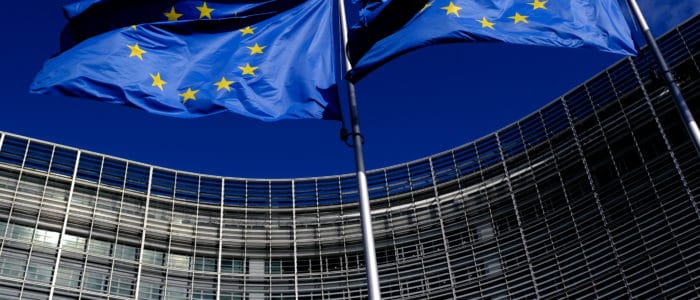Published
Something Fishy Going on… – How to Rationalise European and Global Fisheries Policies
Subjects: EU Single Market European Union

By Lisa Brandt (former Trade Analyst at ECIPE)
World fish stocks are in peril. But despite massive overfishing, governments continue to support the unsustainable exploitation of maritime resources.
Incidentally, we are all on the same boat of unsustainable global fisheries policies, or rather, on the same sinking ship. The capacity of the global fishing fleet is twice the size of sustainable levels. As a result, 85% of the marine fish stocks worldwide are either fully exploited or overexploited, according to the FAO.
Like in a prisoner’s dilemma, only cooperation can optimise the outcome. In contrast to current practises, fisheries management policies must provide fishermen with proper incentives. The worldwide fisheries industries receive $14-20bn in subsidies each year. While it is true that subsidies do not automatically lead to overcapacity and overfishing, they certainly create incentives for fishermen to continue fishing despite losses.
With the reform of the Common Fisheries Policy (CFP), the EU now has the chance to set the example. Although the European Commission may be all at sea about the reform, the challenges are daunting and catchy guidelines will not suffice.
First, the blatant overcapacity of the European fisheries fleet must be reduced. It is currently two or three times larger than sustainable numbers, consisting of 141 thousand fishermen and 85000 vessels. Around 60-70% of the stocks in the EU waters are overfished. This has contributed to a decrease in catches by 26% during the last 15 years. However, as long as the EU spends money like water on the fishing industry; the proposed budget for 2014-2020 amounts to 6.5bn euro, these fishermen are encouraged to keep on fishing. Bilateral agreements allowing EU-flagged vessels to fish in third countries’ waters against compensation are neither a solution.
Second, the quota system must be reformed in order to avoid discarding. Inaccurately designed quotas currently force fishermen to throw horrendous amounts of fish back into the sea dead. The management and monitoring of the CFP must also be improved, notably to prevent illegal, unreported and unregulated fishing from slipping through the net.
As important and urgent as a sea change of the CFP might be, collective action is needed at the global level if EU policies are to have a bigger impact than that of a drop in the ocean. As the world’s largest importer of fishery products, the EU is dependent upon sustainable fisheries policies elsewhere. Imports currently account for 60% of the EU consumption.
However, the difficulties of the EU27 to reform its fisheries policies are multiplied at the multilateral level. While environmental alarms and important work conducted by the United Nations and regional organisations do not seem to induce countries to rationalise their fisheries policies, economic consequences might. Given that 39% of the total production of fish products is traded, the World Trade Organisation (WTO) could play an important role in preventing this tragedy of the commons from deteriorating. Building on the Doha mandate, countries have agreed to strengthen the ‘disciplines on subsidies in the fisheries sector, including through the prohibition of certain forms of fisheries subsidies that contribute to overcapacity and over-fishing’.
But the issue is controversial, and with ocean wide divergences in opinions, the WTO seems to be in deep water. If fisheries subsidies were to be prohibited as part of the Agreement on Subsidies and Countervailing Measures, countries would henceforth have the right to retaliate against a foreign country that subsidises its fisheries industry by invoking negative environmental externalities. This would expand the SCM agreement, which is currently confined to pure economic ‘injury’ or ‘adverse effects’ on industries.
Amid the Doha impasse, not even a watered down agreement on fisheries appears feasible. The negotiations have come to focus rather on expanding the exceptions than tightening the disciplines. While countries in the ‘friends of fish’ group push for stronger disciplines, others do not only consider the issue to fall under national competence, but reject the causal link between subsidies and overfishing.
The deadlock is symptomatic of the ongoing changes in the global economy, turning special and differential treatment for developing countries into less of a clear cut issue. Asia produces 65.8% of the global fisheries production (China alone produces one third of the global production), Europe only 10.8%. Asia also has more people working in the sector. Out of the 150 million people that make a living out of fisheries worldwide, 85.5% live in Asia, 1.4% in Europe. But at the same time, the average production per person is much higher in Europe, 23.9 tonnes, compared to 2.4 tonnes in Asia, suggesting that subsidies have different impacts in different contexts.
Regardless of who is contributing the most to overfishing, or what the criteria for exemptions should be, clear incentives that reduce capacity and stop overfishing must be set. In economic terms, there are significant gains to be made. The foregone economic benefits resulting from overfishing and underperforming fisheries stocks amount to more than $50bn per year, according to World Bank estimates. But as long as the fisheries industry is forced to operate with losses, it is natural for fishermen to demand subsidies. It is therefore also time to consider whether it is reasonable that the value of the capture only accounts for 20% of the total value of the fisheries market.
Policy makers must not wait to catch the next wave; this is the one time when we cannot rely on there being plenty of other fish in the sea!